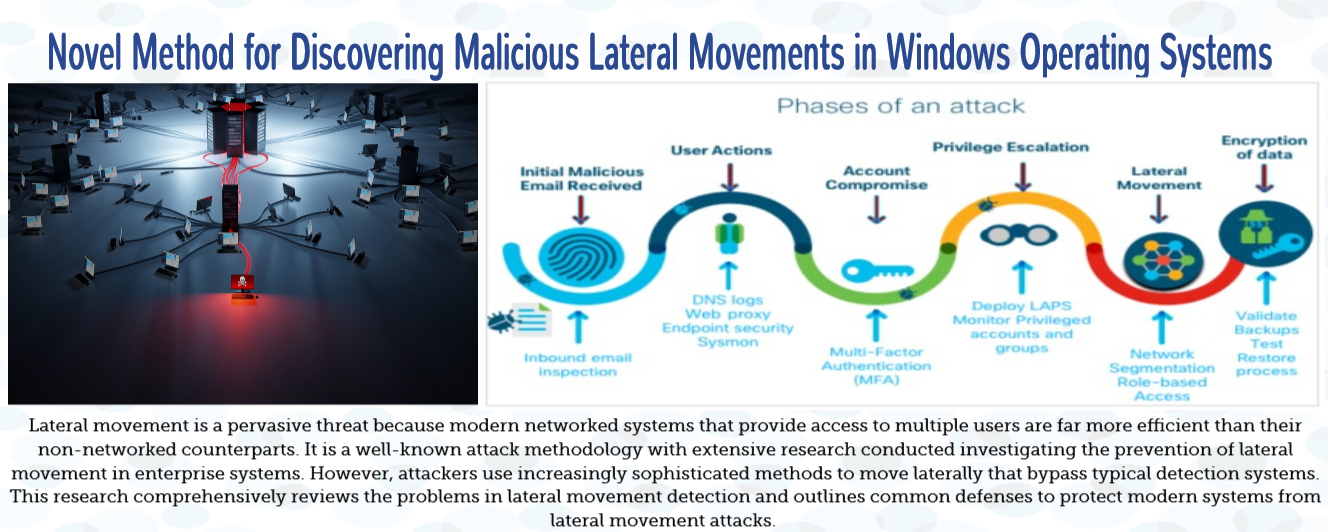A Novel Method for Moving Laterally and Discovering Malicious Lateral Movements in Windows Operating Systems: A Case Study
DOI:
https://doi.org/10.31357/ait.v2i3.5584Keywords:
Lateral-movements, Cyber-attacks, Confidentiality, Security, Phishing, Threats, ShadowMoveAbstract
Lateral movement is a pervasive threat because modern networked systems that provide access to multiple users are far more efficient than their non-networked counterparts. It is a well-known attack methodology with extensive research conducted investigating the prevention of lateral movement in enterprise systems. However, attackers use increasingly sophisticated methods to move laterally that bypass typical detection systems. This research comprehensively reviews the problems in lateral movement detection and outlines common defenses to protect modern systems from lateral movement attacks. A literature review outlines techniques for automatic detection of malicious lateral movement, explaining common attack methods utilized by advanced persistent threats and components built into the Windows operating system that can assist with discovering malicious lateral movement. Finally, a novel approach for moving laterally designed by other security researchers is reviewed and studied, an original process for detecting this method of lateral movement is proposed, and the application of the detection methodology is also expanded.

Downloads
Published
How to Cite
License
Copyright (c) 2022 Akalanka Mailewa, Kyle Rozendaal

This work is licensed under a Creative Commons Attribution-NonCommercial-NoDerivatives 4.0 International License.
The Authors hold the copyright of their manuscripts, and all articles are circulated under the terms of the Creative Commons Attribution License, which permits unrestricted use, distribution, and reproduction in any medium, as long as that the original work is properly cited.
The use of general descriptive names, trade names, trademarks, and so forth in this publication, even if not specifically identified, does not imply that these names are not protected by the relevant laws and regulations. The authors are responsible for securing any permissions needed for the reuse of copyrighted materials included in the manuscript.




